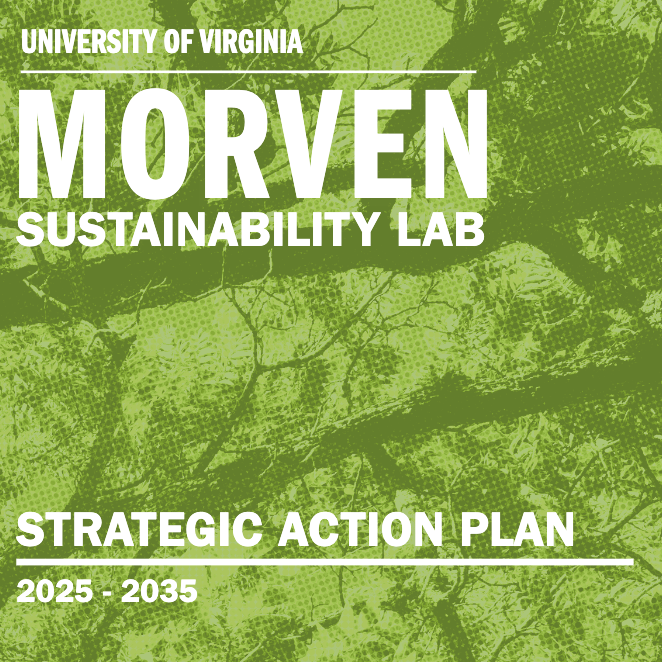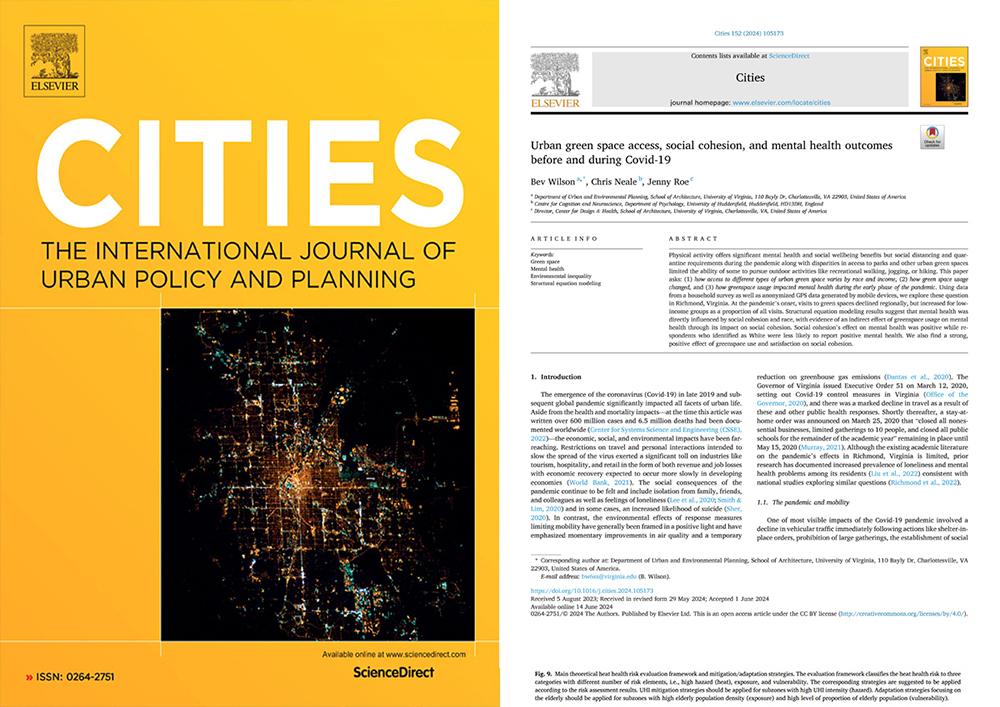
Bev Wilson and Jenny Roe publish on the correlations between urban green space + mental health pre- and post-pandemic

Cities: The International Journal of Urban Policy and Planning
Volume 152
September 2024
Associate Professor of Urban and Environmental Planning Bev Wilson and DeShong Professor of Design and Health Jenny Roe recently co-authored a research paper titled "Urban green space access, social cohesion, and mental health outcomes before and during Covid-19" published in Cities: The International Journal of Urban Policy and Planning. The paper, also co-authored by Chris Neale (Centre for Cognition and Neuroscience, Department of Psychology, University of Huddersfield), presents outcomes from a research study conducted in Richmond, Virginia that studies the correlations between access to green space and mental health benefits during and after the Covid-19 pandemic.
Cities publishes articles on many aspects of urban planning and policy while distinguishing itself by providing an international and interdisciplinary platform for the exchange of ideas and information among urban planners, policy makers and analysts, and urbanists from all disciplines.
The primary aims of the journal are to analyze and assess past and present urban development and management as a reflection of effective, ineffective and non-existent planning policies; and the promotion of the implementation of appropriate urban policies in both the developed and the developing world.
In "Urban green space access, social cohesion, and mental health outcomes before and during Covid-19," Wilson, Neale and Roe analyze how social distancing and quarantine requirements during the pandemic along with disparities in access to parks and other urban green spaces limited the ability of some to pursue outdoor activities like recreational walking, jogging, or hiking. As physical activities are known to offer significant mental health and social wellbeing benefits, through their research study, they examined the mental health outcomes of green space pre- and post-pandemic, and its correlation to access and usage. The research team's study makes several important contributions to an understanding of how green space usage changed during the early phase of the Covid-19 pandemic and its connection to social cohesion and mental health outcomes in Richmond, Virginia.
The paper asks:
How does race and income impact access to different types of urban green space?
How did green space usage change pre- and post-pandemic?
How did green space usage impact mental health
during the early phase of the pandemic?
Using data from a household survey as well as anonymized GPS data generated by mobile devices, the research team explored these questions in Richmond. At the pandemic's onset, visits to green spaces declined regionally, but increased for low-income groups as a proportion of all visits. Structural equation modeling results suggest that mental health was directly influenced by social cohesion and race, with evidence of an indirect effect of green space usage on mental health through its impact on social cohesion.

Their findings have important implications for the increasing the provision of local urban green space given the high likelihood of a future pandemic in the next decade. First, access to parks and green spaces is an environmental justice issue and the researchers find that walkability matters more than regional accessibility for building social connections. At the outset they hypothesized that behavioral shifts like social distancing may have influenced the type of green space destinations favored by residents. However, rather than a preference for larger parks and green spaces, they found that local parks became more important during March and April 2020 as the distance people traveled shrank.
Additionally, they found that —
During the most recent pandemic—and
stringent social distancing restrictions—
the role of social cohesion as a determinant
of mental health and as a wellspring for
resilience cannot be overstated.
In addition to physical fitness, stress
relief, and the restorative effects of nature,
green spaces also provide important
cultural ecosystem services by facilitating
social interaction and contributing to
greater social cohesion.
Excerpt, "Urban green space access, social cohesion, and
mental health outcomes before and during Covid-19" (2024).
Lastly, in addition to enhancing physical access, the physical and mental health benefits associated with green space should be more clearly communicated. This study found that visits to UGS from low income census block groups increased dramatically as a proportion of all visits to UGS during March 2020, at the same time that the public health emergency reduced the slate of options for exercise and recreation.
The research team also concludes that future research and planning interventions should be undertaken to better understand how race, ethnicity, and other factors influence who feels welcome and safe in parks and UGS so that these public resources can be made more inclusive and benefit a wider segment of society.
...

Authors
Bev Wilson, University of Virginia
Chris Neale, University of Huddersfield
Jenny Roe, University of Virginia
Citation
Bev Wilson, Chris Neale, Jenny Roe (2024). Urban green space access, social cohesion, and mental health outcomes before and during Covid-19. Cities, Volume 152, 105173, ISSN 0264-2751. https://doi.org/10.1016/j.cities.2024.105173.
(https://www.sciencedirect.com/science/article/pii/S0264275124003871)
Acknowledgment
This research was funded by a Rapid Response grant from the UVA Environmental Institute.


